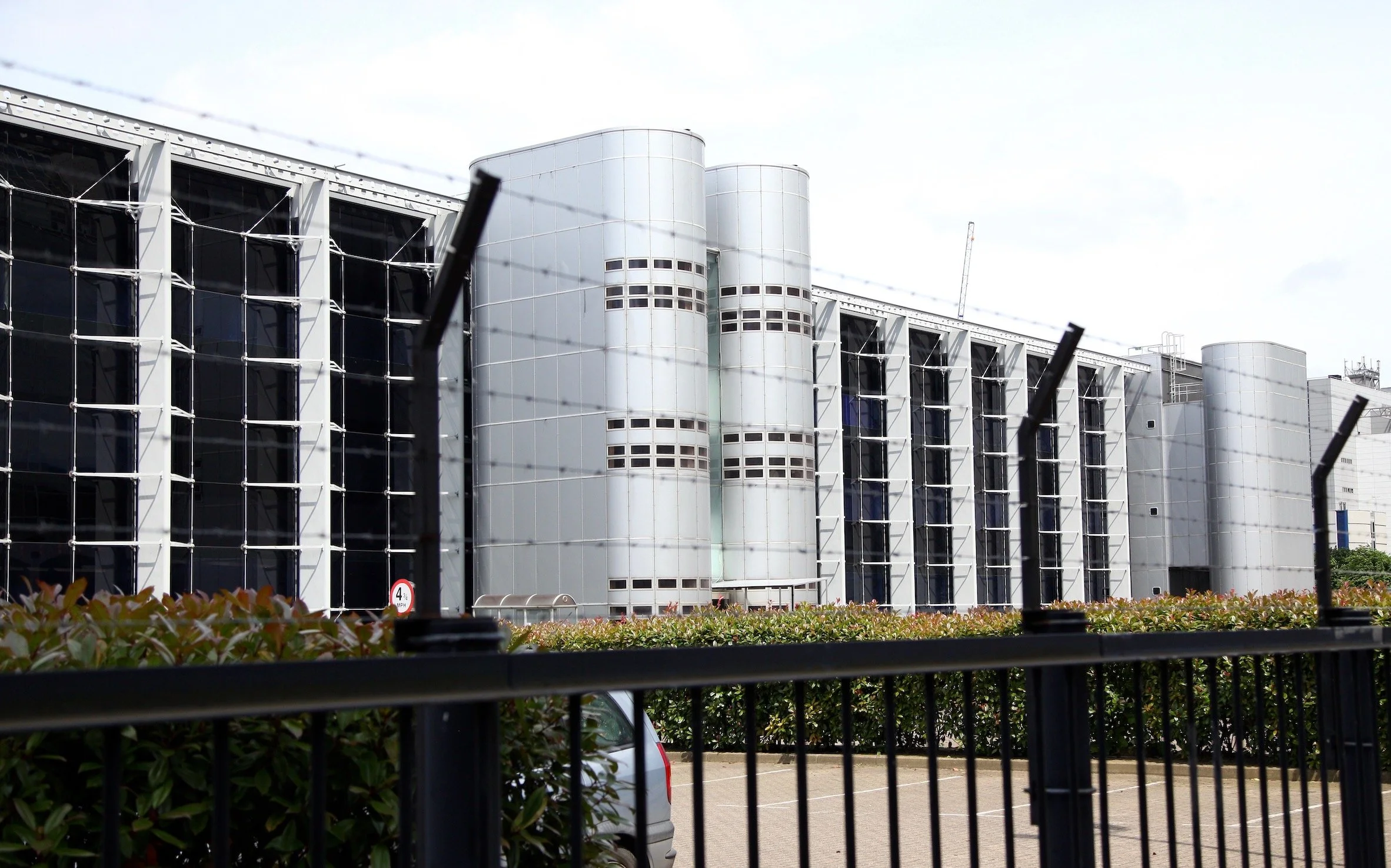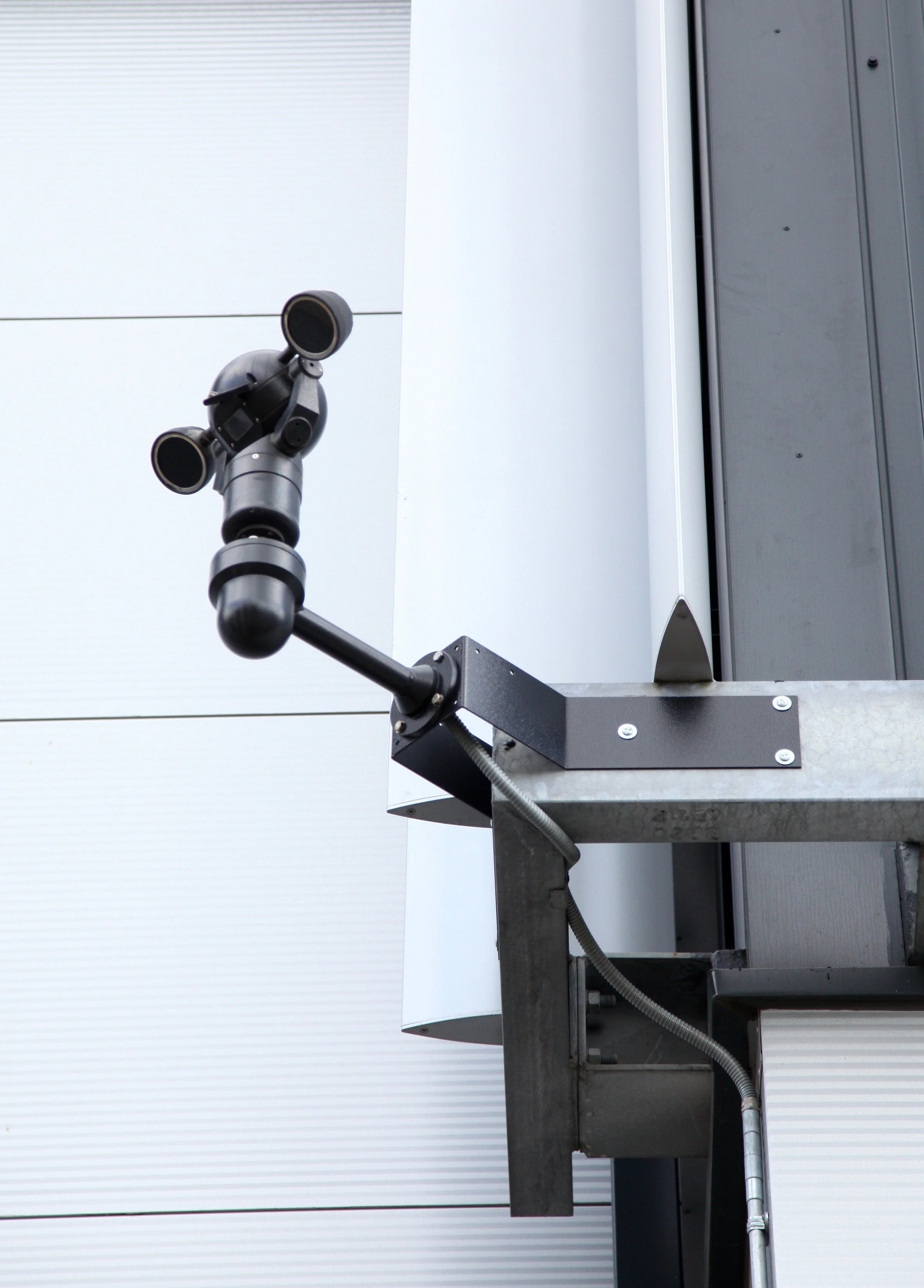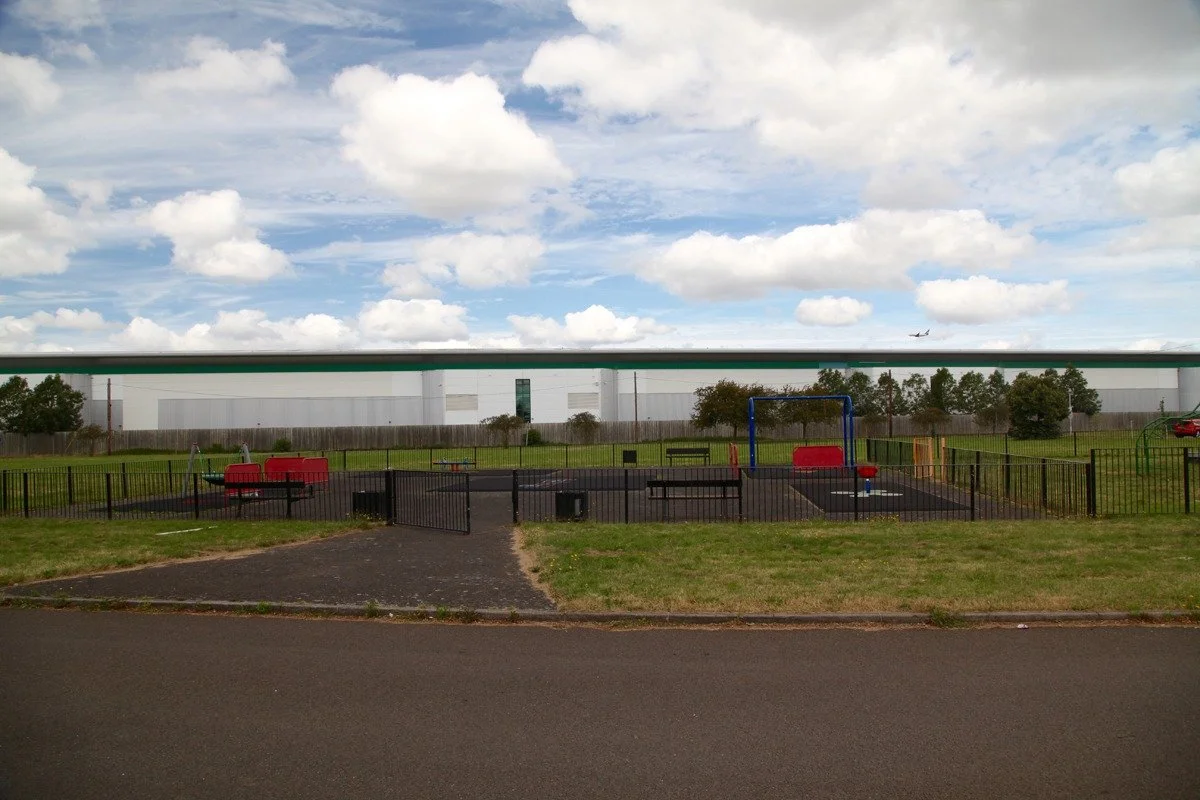Data Centre Detectives
A data centre behind barbed wire (photo: Tom Ravenscroft).
It’s 10pm, do you know where your data is? Or any time of day for that matter. In our increasingly digital-dependent existence, the internet is still conceptualised as something that whizzes through the electronic ether rather than anything as mundane as a building full of boxes. But all over the world, these secretive shelters are full of hot, humming machines, keeping our communications systems moving.
Power House: The Architecture of Data Centres, an exhibition at Roca Gallery London curated by Clare Dowdy with Tom Ravenscroft, is lifting the lid on these elusive digital dens through the lens of architecture. Not that there is a single data centre typology. It would be fun if they were “Ducks” à la Denise Scott Brown – novelty computer-shaped landmarks standing like cartoon sentries on street corners. But, instead, data Centres wear many disguises. They lurk in plain sight as unobtrusive, retrofitted buildings in urban centres, or as vast warehouses tucked away in remote locations.
Some of them hide away underground in old bunkers and disused mine shafts, while Microsoft has been testing an underwater data centre that was sunk 3.3m down on the seabed near the Orkney Islands. The North Sea, the technology firm hypothesised, could act as a natural cooling system for the machines entombed within. Engineering firm Arup, meanwhile, has presented a concept for data centres located on retrofitted oil rigs especially for Power House, imagining a second life for these symbols of extractive capital as sustainable solutions for an online future, with the wind and water acting as nature’s coolant for humanity’s machines. Keeping servers from overheating is the primary challenge of the data centre; Facebook keeps its European one near the Arctic Circle for just this reason.
A special section of Power House is dedicated to London’s data centres, which were tracked down and photographed by Ravenscroft. “As no-one quite knows what a data centre really looks like they can hide right in front of our eyes in our cities,” says Ravenscroft, who spent hours surfing the net and pounding the pavement tracking down these elusive buildings. “By paying almost no interest in their appearance they have a non-aesthetic that allows them to blend into the surrounding city.”
Ravenscroft started his hunt by searching for clues online, poring over satellite imagery on Google Maps looking for the tell-tale sign of a building covered in a few too many cooling systems. “One of the nice juxtapositions of data centres is they are buildings entirely entwined with the internet, which couldn't be researched on the internet,” he says. Potential targets identified, he hit the streets armed with a camera and a guileless expression. “Data centres have heavy security. They are covered in cameras and wrapped in barbed wire,” says Ravenscroft. “I got asked to leave multiple industrial estates by security guards suspicious of my camera. On the plus side, these (mostly) guys often confirmed that the building was a data centre.”
The guardedness of data centres is down to concerns over privacy and security. All that personal data and corporate information squirrelled away on servers must be kept behind virtual firewalls and physical locks and keys. These vital pieces of infrastructure are also vulnerable to disruption. The recent global Facebook outage was down to an accidental severing of the connection with its data centres, kneecapping half the world’s communication systems for seven hours. Data centres have also become targets. In April this year, a man was charged with threatening to blow up an Amazon data centre in America.
Our data addiction is deepening, warns Power House, with architectural solutions needed to keep pace with the rapacious need for ever more storage – something ideally achieved without destroying the planet in the process. By 2025 the International Data Corporation estimates 75 per cent of the population will have a data interaction once every 18 seconds. The cryptocurrency craze is throwing fuel on the fire, with Bitcoin’s carbon emissions alone comparable to those of New Zealand. It’s a disconcerting thought, which Power House attempts to soothe with architects’ concepts for natural cooling solutions or heat-exchange systems that could divert excess warmth to people’s homes. Either way, the rise of the data centre will be unstoppable.
Words India Block
Photographs Tom Ravenscroft
Power House: The Architecture of Data Centres is on at Roca London Gallery until 28 February 2022.




